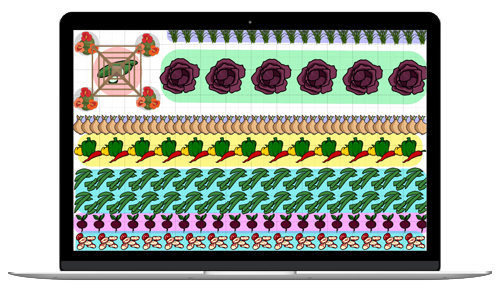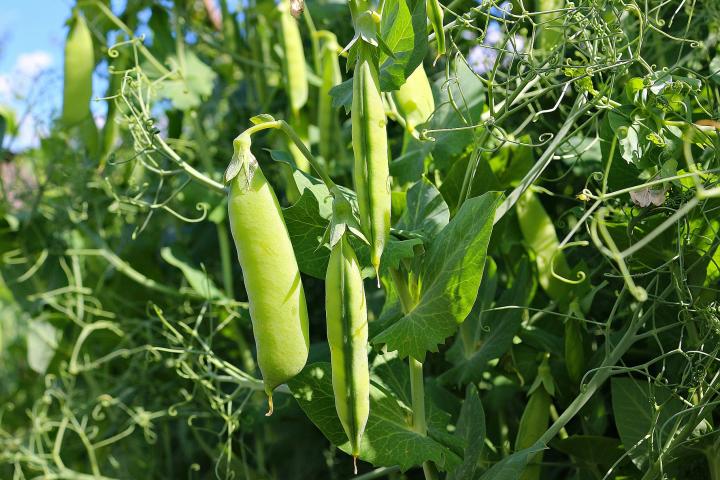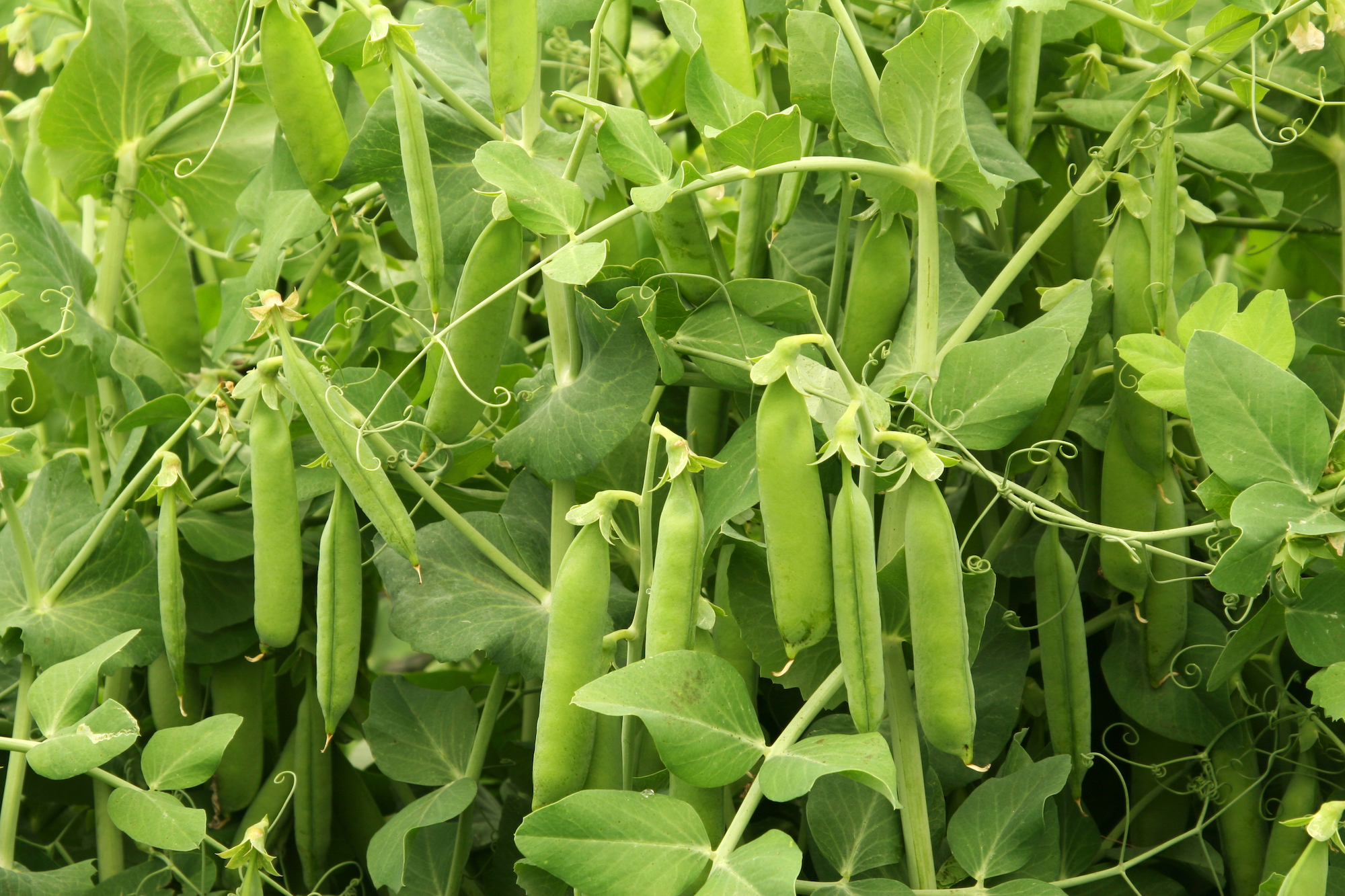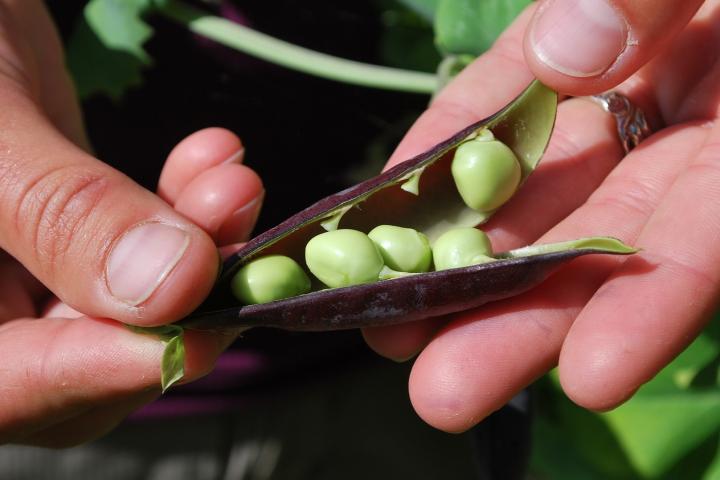
Plant sweet, crisp peas in the spring or fall for a tasty garden treat!
The Almanac Garden Planner - Use It Free for 7 Days!
Plan your 2025 garden with our award-winning Garden Planner.
Types
Shelling Peas: Also known as garden or sweet peas, these are the most common types of peas available. Some good varieties to try include:
- ‘Green Arrow’: 2- to 3-foot vines; no support required; high yields; tolerant of mildew and Fusarium wilt
- ‘Lincoln’: 2- to 3-foot vines; no support required; tolerant of mildew and Fusarium wilt
- The classic ‘Wando’: suitable for freezing
- ‘Thomas Laxton’: high sugar content
- ‘Progress No. 9’: good disease resistance
- ‘Little Marvel’: grows only 15 inches tall
Snap Peas: You eat the entire tender pod of snap peas. Some good varieties to try are:
- ‘Sugar Ann’: vines grow only 2 feet tall, no support required.
- ‘Sugar Snap’: the original (Calvin’s), just brought back; carried only by Johnny’s Selected Seeds
- ‘Early Snap’: an early-maturing version produces peas 10 to 14 days earlier than ‘Sugar Snap’
- ‘Super Sugar Mel’: produces 4-inch-long, very sweet pods
Snow Peas: Common in Chinese cooking, these flat-podded peas have edible pods. Some good varieties to try include:
- ‘Mammoth Melting Sugar’: 4- to 5-foot vines; stringless pods; wilt tolerant
- ‘Oregon Sugar Pod II’: grows only 2-1/2 feet tall
- ‘Snowbird’: resistant to fusarium wilt
Cooking Notes
Ideally, peas should be used when freshly picked as they rapidly toughen and will lose their sweetness.
Green peas can be eaten raw as a snack or in salads. Peas are also excellent in pasta, soups, casseroles, stir-fries, and sautés. Cooking times vary greatly depending on when the green peas were harvested. Young, small ones require less cooking than older, starchy ones.
To steam, put 1 inch of water in a pot, bring to a boil, place a steaming basket in the pan, slowly add peas to the steaming basket, and cover with a lid. Steam for about 2 minutes. Or, to microwave, put 2 tablespoons of water in a microwavable dish and cover. Microwave on high, checking every 2 minutes for doneness. Add butter and salt as desired.
Interestingly, the pea tendrils are also edible! Harvest these young pea shoots when they are 12 to 18 inches out of the ground. As with peas, eat the tender shoots soon after harvesting. Add to salads or into stir-fries at the end of cooking.
ADVERTISEMENT
I grow snow peas, eating them as they grow, right in the garden. Friends come to chat, we go out and feast on snow peas while catching up. Much better than cookies.
So delicious! We’ll come visit anytime!
To shell peas more easily, blanch first then shell them. They pop right out of the shells very easily and fast.
What about southern peas? Black eye, purple hull, etc? I know they're more a warm weather crop but what about planting by the moon??
Cream 40 field peas need help to grow. How many days to harvest?
I grow sweet peas for the flowers & peas; Bees like pea blossoms; pea blossoms are pretty~
Snow, munch, sugar snap every March. Zone7 they never make it into the house💙👍🏼
Hi, I’ve been picking my snow peas for a month now and most grew this last week. I picked a few that are developed inside but still in pod. Can I use these for planting next year? I know I should have left them on the vine. Can I let them dry and use or just eat them now?
I would like also to know can I use left over peas to plant next year.
When I studied Biology we were taught that the seeds or seed coverings (the sexual reproduction part of the plant was fruit as opposed to roots, stems and leaves. Question: Why is a pea not a fruit, but a vegetable?













